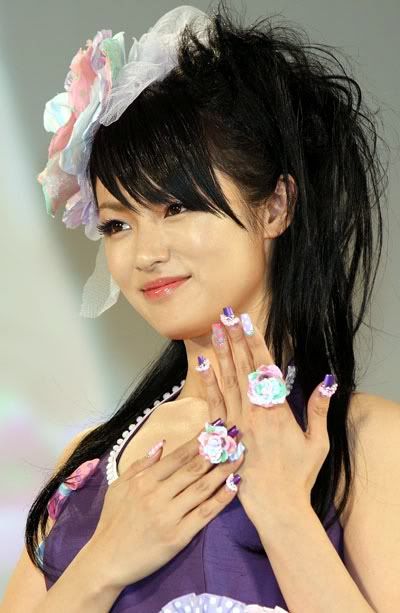Most mammals develop multiple nipples along each line of milk, with the total approximate size of the maximum capacity, and half of the total (ie the number one side) approximating the size range average for this species. In primitive mammals - the monotremes like the platypus - mammary glands empty onto the skin without a nipple. In cetaceans such as whales, the child can not form a vacuum seal to a nurse, because of its structure mouth nipple whale is unlike that of any other mammal. Rather than requiring action by the suction, discharge of milk is supplied by muscles tongue. The calf has extended the nipple in his mouth, and the mother ejects or expels her milk into the mouth of the calf. The pigments of the nipple and areola are Brown eumelanin, a brown pigment, and pheomelanin a greater extent, a red pigment. In many women, there are small bumps on the areola, which are called 'Montgomery bodies. In humans, the nipple is innervated by the fourth intercostal nerve.
Tuesday, August 17, 2010
Most mammals develop multiple nipples along each line of milk, with the total approximate size of the maximum capacity, and half of the total (ie the number one side) approximating the size range average for this species. In primitive mammals - the monotremes like the platypus - mammary glands empty onto the skin without a nipple. In cetaceans such as whales, the child can not form a vacuum seal to a nurse, because of its structure mouth nipple whale is unlike that of any other mammal. Rather than requiring action by the suction, discharge of milk is supplied by muscles tongue. The calf has extended the nipple in his mouth, and the mother ejects or expels her milk into the mouth of the calf. The pigments of the nipple and areola are Brown eumelanin, a brown pigment, and pheomelanin a greater extent, a red pigment. In many women, there are small bumps on the areola, which are called 'Montgomery bodies. In humans, the nipple is innervated by the fourth intercostal nerve.
Minola is represent Yuni Shara absent in the divorce accusation principal session. Hendry Siahaan is also not present, he send mail to court.

Yuni Shara Hot singer
In the mail, Hendry Siahaan declare to agree in the wife procedure of diforce. he is even also extradite thoroughly decision in court.
Yuni Shara not ask living for the children, also doesn’t demand expressly right exercise brings up child. but follow Minola, because Yuni Shara-Hendry Siahaan two childs is still five year, fitting right brings up in mother.
procedure of diforce principal session Yuni Shara in the husband goes on only around 10 minutes at space kresna religion court jakarta south. in session lawyer Yuni Shara submit the client accusation matter.
For your arms, try to use the weights that are between one and five pounds each. I suppose you could put five pounds of flour and five pounds of sugar in a plastic bag to slide to get the same results as the shop gym equipment, but I let you be the judge of what works best for you.
To tone your triceps and chest, your position in a squat position. Keep your legs aligned to be equal to the width of the shoulders. With knees slightly bent and holding a weight in each of his hands, slowly move your arms from your body and keep a number of ten, when you lift your arm out. You feel a little tension or burning in the chest and triceps. This means that the exercise is to work.
Holding weights, stretch your arms straight ahead, and then by bending each arm at the elbow, the curve of your hand toward your body until it reaches the shoulder. This will work your triceps.





Kyoko Fukada is an actress and singer.She was born on 2 November 1982, in Tokyo, Japan. Her name is sometimes contracted to the nickname Fukakyon. Kyoko debuted in 1997 with her first appearance in the television drama Sore ga Kotae da! as Kazune. Fukada appeared in her first movie Ring 2 as Kanae Sawaguchi in 1999 and in later in School Day of the Dead, released in 2000, and Dolls, released in 2002, as Haruna. Fukada is also a J-pop singer and her debut single "The Last Fruit" led to her album Dear, both released in 1999. Her face appeared on several Japanese movies and series.

So let's pretend that SATC 2 was never made and go back to the good old days of SATC where everyone sat around with their girlfriends playing the game of, "Are you a Carrie, Miranda, Samantha, or a Charlotte?"
I recently came upon this blog post on Forbes Woman that analyzed each character and their working personalities and then gave some key takeaways that all business women can learn from their different business personalities.
Let me break down the blog post real quick for you:
To get the full gist, I suggest reading the blog post. The author makes some good points and some that I don't fully agree with.
So here comes the million dollar question: am I a Carrie, Samantha, Charlotte or Miranda? Based on the above, I would hope that I was Samantha with a twinge of Miranda. But my friends might say I have a few splashes of Carrie's self-involvement in me (don't judge!).
Are you a Carrie, Samantha, Charlotte or Miranda in your professional life?
Sunday, August 15, 2010

 |
| The lithe Katya offers stark contrast to the column she wraps her gorgeous self around |
 |
The calm seas provide a silent backdrop as Nargis Fakhri lazes under the summer sun at the Six Senses Hideaway Resort |
 |
As the world stands stunned at her grace, the fair lady has her own thoughts to turn to |
 |
Strategically woven yarns hide the lean figure as she stands tall against the wall |
 |
A subdued view of the beauty who looks at the world in her outsized shades |
Yoon Eun Hye entered the entertainment industry in 1999. Yoon performed her first major role in a drama, Goong as Shin Chae-gyung. This role propelled her to stardom. She portrayed as a tough girl named Han Su in her first movie, Escaping from Charisma. Her next drama after Goong was a comedy called The Vineyard Man Yoon Eun Hye was the lead star of The 1st Shop of Coffee Prince portraying a male role in the drama. Criticisms arose after the first episode aired, but then she proved her acting capabilities even before the drama ended. In line with this, different companies were eyeing her as their endorser due to her gained popularity.
Labels
- Ao Dai Vietnamese (3)
- Asian Girl (10)
- Asian Girls (23)
- Asian sexy (63)
- Beautiful Asian Idol (9)
- Beautiful girl (1)
- Beautiful Girls (8)
- Beautiful Taiwan (5)
- Beauty girl (12)
- Cambodia Bikini (1)
- Cambodia girls (1)
- China Bikini (4)
- Chinese sexy (6)
- Cute Girl (20)
- Cute Hong Kong (7)
- Cute Japan (5)
- Cute Malaysian (1)
- Cute Models (5)
- Cute Taiwaesne (2)
- Cute Thailand (2)
- Cute Vietnamese (2)
- Elly Tran Ha (11)
- Girl Kute (5)
- Girls in Bikini (65)
- Hong Kong model (5)
- Hot Girl (56)
- Hot Girl ChiNa (9)
- Hot Girl Japan (17)
- Hot Girl Korean (72)
- Hot Girl Tokyo (10)
- Hot Girl VietNam (35)
- Hot Girls (175)
- Hot Girls Malaysia (5)
- Indonesia Beauty Girl (5)
- Japan Bikini (11)
- Japanese Bikini (3)
- Japanese Sexy (11)
- Katrina Halili (1)
- Korean Actress (1)
- korean Model (5)
- Korean Sexy (6)
- Maria Ozawa (6)
- Miss auto (1)
- Miss Earth 2010 (1)
- Miss Girl (1)
- Miss Hong Kong (2)
- Miss Korea (1)
- Miss Philippines (1)
- Miss Vietnam (2)
- Miss Vietnamese (3)
- Miss World (4)
- Model (8)
- Model Vietnam (3)
- Ngoc Trinh (1)
- Philippines Girls (5)
- Sexy (8)
- Sexy - Bikini (43)
- Sexy Girl Japan (12)
- Sexy Girls (44)
- Sexy in bikini (45)
- Sexy Korean Girls (1)
- Singapore Girls Sexy (4)
- Sora Aoi (2)
- Taiwan Sexy (1)
- Taiwanese Models (1)
- Teen Girls (4)
- Thai sexy actress (1)
- Thai Sexy Girls (8)
- Thailand Sexy (8)
- Vietnam Sexy Girls (1)
- Vietnamese Bikini (3)
- vietnamese girl (2)
- Vietnameses Girls (3)
- Vietnameses Sexy (2)
My Blog List
Feedjit
Popular Posts
-
Ai Shinozaki memang dikenal karena memiliki aset yang lumayan, tapi disini saya tidak akan memperlihatkan asetnya (mungkin lain...
-
After Blogging so many depressing episodes of Clannad ~AS~, and White Album I’ve decided to do another Japanese idol/cute girl post....
-
Name: Azusa Togashi / 富樫あずさ Date of Birth: 1990/12/12 Home: Saitama Prefecture Blood type : A Height: 162 cm Measuments: 84 - 58 - 8...
-
Name: Yukiko Suo ( 周防ゆきこ ) Birthday: March 12, 1988 Birthplace: Kanagawa Prefecture, Japan Blood Type: A Height: 160 cm Body Measuremen...
-
japan naked girl japan naked girl japan naked girl japan naked girl japan naked girl japan naked girl japan naked girl japan naked...
-
After we see her in sexy but not open dress Ayako Yamanaka does as our request to open more LOL then she remove her shorts jean and lying ...
-
Honey you look like a pink flower on the sunshine of this beach.LOL I am not a poet girl but I mean it.Yumi Kobayashi very stand out in ...
-
Seo In Young Biography Name: Seo In-Young Also known as: Elly Born: September 3, 1984 (1984-09-03) Origin: Korea Genre(s) Pop Occupation(s...
Blog Archive
-
▼
2010
(146)
-
▼
August
(51)
- Hot Julia Perez Sexy Toge
- Yuni Shara Sexy Singer
- Kyoko Fukada
- Song Jina very cute face Korean Race queen
- Sung Eun sexy girl
- Sex and the City & My Career
- Kang Min Kyung
- Pretty girl very sexy
- Kingfisher swimwear calendar 2009 First Cut
- Yui Iwata in japan school uniforms
- Yoon Eun Hye Sexy and Beautiful Girls in Korean
- Reva Nesta Sexy Photo
- Clara Diana Popular Magazines Fresh Look
- Nicola Roberts snapped outside Polydor Records
- Miss Tiffany 2010
- Nam Eun Ju
- Gossip Girls' Summer Vacation
- Sexy Girls in Bikini
- The Beautiful Aishwarya Rai photos
- Laraib Tells About Study Visa For UK
- Japanese band - Kalafina
- Hot Sexy Bab
- Beautyful Girls
- Saki Yamaguchi - Sexy - Bikini
- Bikin fashion for hot girl
- Beauty girl fashion
- Dep tung Centiment - Hot girls
- Hot Sexy Girls At Car Show
- Hot Girls SMS Address
- Kurara Chibana
- Kim Petras to attend Comet Awards in Germany
- KIM KARDASHIAN, ALEXA CHUNG SHOW.
- Popular Magazine July 2010 - Vicky Shu
- Top sexy school girls bikinis
- Beautyfull girl
- J-pop singer Sowelu - Aki Harada
- Hotgirl VietNam
- hotgirl Van Navy
- hotgirl elly
- Girl xinh cute bikini
- Hot Girls TQ kimono
- hot asian girls sexy asian hot girls gallery asian...
- Asian Hot Girls with Long Legs Pics
- Hot Girls
- [HOT] Girl Asian Bikini
- Ren Yoshioka - Sexy - Bikini
- Korena Girl Nana
- Ayaka Komatsu - Asian Sexy Hot Girls
- Ao Dai Vietnam
- Tokyo Model Megumi Fukushita
- Ha Ji Won
-
▼
August
(51)
Blucent
Total Pageviews
Popular Posts this month
-
Here are pictures of a Loas girl,she is a super model.Enjoy the hot pictures.
-
Malaysia (pronounced /məˈleɪʒə/ or /məˈleɪziə/) is a country in Southeast Asia consisting of thirteen states and three Federal Territories...
-
japan naked girl japan naked girl japan naked girl japan naked girl japan naked girl japan naked girl japan naked girl japan naked...
-
After we see her in sexy but not open dress Ayako Yamanaka does as our request to open more LOL then she remove her shorts jean and lying ...
-
Watch HOT Nepali Models video clip Tags sexy nepali models cybernepal cybersansar hot models sexy models miss nepal miss ... nepali batt...
-
After Blogging so many depressing episodes of Clannad ~AS~, and White Album I’ve decided to do another Japanese idol/cute girl post....
-
Asian girls | Japanese girls | Chinese girls | Korean girls | Vietnamese girls | Euro girls | Usa girls | Cute idol girl Kana Yuuki we...
All Rights Reserved. Blog Design by Articles
Bloggerized by Free Blogger Templates


























































